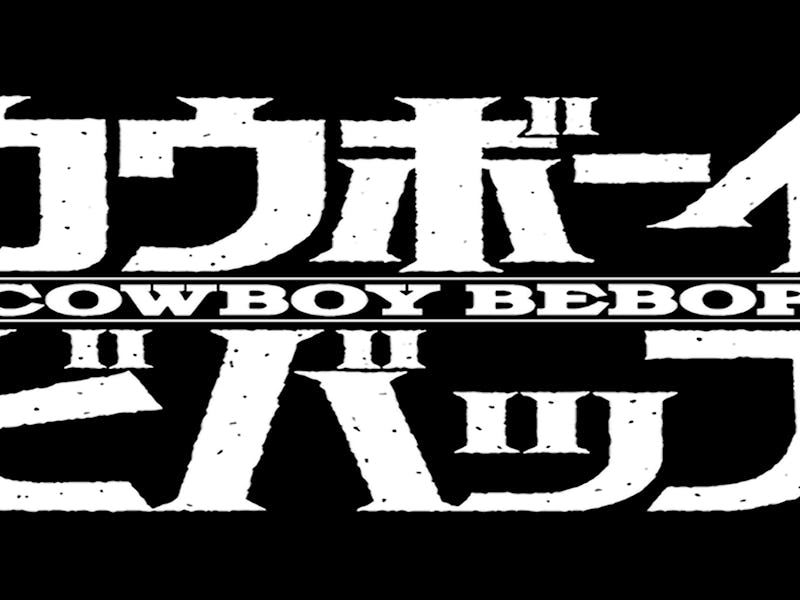'Cowboy Bebop' Predicted the Millennial Experience
'Cowboy Bebop' was ahead of its time in the '90s, but is it perfect for today?

Crunchyroll and Funimation recently announced a licensing partnership, which means the landmark anime series Cowboy Bebop is more accessible than ever before. That development is particularly important because Cowboy Bebop is the perfect anime for the millennial generation.
Cowboy Bebop premiered in Japan in 1998. Three years later, Cowboy Bebop was licensed in North America, becoming the first anime to air on Adult Swim. Cowboy Bebop quickly gained a cult status before being generally acknowledged as one of the most universally-praised anime ever to broadcast. The show’s handling of relevant generational concerns, like identity and existential ennui, is stunning.
Cowboy Bebop centers around a crew of bounty hunters constantly looking for their next meal ticket. The show blends sci-fi, noir, absurdist humor, and post-modernism to create an anime that, as the creator put it, “transcends genres.” But rather than resting on its laurels as a show ahead of its time, Cowboy Bebop intermittently tackled a devastating question: What’s next?
From left to right: Jet Black, Spike Spiegel, Faye Valentine, Edward, Ein
Aside from a handful of “story” episodes, every episode of the series acted as a standalone adventure that usually adopted a different genre. One episode, “Black Dog Serenade” acts as a hardboiled detective story, while another episode, “Toys in the Attic”, is a John Carpenter horror movie homage. But even as the show refused to directly connect a story episode to episode, there is a melancholic thread that runs through the series.
Spike Spiegel, Faye Valentine, Edward, and Jet Black all feel like they suffer from a case of arrested development. There’s no real ambition within the group other than earning a paycheck and surviving the next adventure. The fact that the gang gets into wacky adventures episode after episode never really justifies why they’re even together. The truth is that the Bebop crew never feels like a cohesive unit. Their coming together is simply a means of survival, and each crew member carries with them some undefined goal. For the most part, the Bebop crew simply coexists while trying not to starve.
That narrative is particularly resonant today as millennials have come to a cultural flashpoint where there’s been a genuine change in how young people choose to live their lives. “This is fine” has become a generational rallying cry as rampant debt, crumbling social services, and sluggish economic recovery is preventing the young from acquiring a lifestyle objectively similar to those of our predecessors.
But while journalists and cultural pundits continue to observe what it is that millennials will “kill” next in a neverending quest to not do things like previous generations, Cowboy Bebop never really dwells on this existential crisis. In fact, it’s the show’s willingness to sit comfortably alongside such an uncomfortable reality that makes Cowboy Bebop practically zen. In the face of constant poverty and general waywardness, the crew of The Bebop not only accepts these as symptoms of their reality, but take these professional and personal setbacks in stride.
Ed leaves the Bebop crew.
This would be depressing if it weren’t for the fact that the show anchors itself with a cast so self-assured, their confidence is inspiring. While each of the crew members are haunted by some kind of traumatic event from their past, their ability to ignore their present situation as nothing more than a momentary setback feels like an important lesson in this day and age.
However, as the series progresses, reality begins catching up with the various members of The Bebop crew. As each of the crew “wakes up” from their dream-like existence of waywardness, their present situation quickly becomes deadly serious. All at once Cowboy Bebop starts focusing on Spike’s past as an assassin, Faye’s recovery from an accident that left her with amnesia, and Ed’s decision to leave The Bebop crew to forge her own path. The show’s latter half barely resembles the laissez-faire attitude the show carried in the first half.
"See You Space Cowboy"
The show suggests that The Bebop crew’s problems stem from their own personal histories combined with the general chaos of life. While it’s similarly easy to hand wave these millennial inconveniences as being just that, there needs to be a moment when people also take a serious look at the present situation and wonder if this is really how things should be.
Unfortunately for viewers, Cowboy Bebop won’t hold the answer to these questions as the show ends with one of the most famously ambiguous endings in television history. However, as the themes from Cowboy Bebop continue to resonate 17 years after the show premiered, it’s easy to wonder if the show set in 2071 isn’t more appropriate for the year 2017. The only things missing are the spaceships.